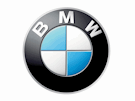The author has 30+ years of automotive experience and has assembled the most extensive collection of symbols and warning lights anywhere (over 1,000!) and can help you open and start any keyless start car with a dead key fob battery. BA, St. Joseph's, ME: MS, RPI, NY
Most commented posts
- Information Displays and Message Centers — 10 comments
Author's posts
Mercedes Back-up Start Page Update Changes in the 2024 G-Class SUV required a Mercedes back-up start page update. The models joined the GLE and GLS SUVS which use a slot found inside the center console storage area at the front as a back-up start location, and have done so since 2019. As is true with …
Continue reading
Permanent link to this article: https://dashboardsymbols.com/2024/08/mercedes-back-up-start-page-update-needed-for-g-class-suvs/
Alfa Romeo dashboard symbols We updated our Alfa Romeo dashboard symbols page. In the process we added nearly a dozen new symbols. This was due to the addition of a hybrid system in the 2024 Tonale. Most of the symbols we already featured from other manufacturers, but as is too often the case, the company …
Continue reading
Permanent link to this article: https://dashboardsymbols.com/2024/08/alfa-romeo-dashboard-symbols-page-updated/
An EV has a 12-volt battery I got a panicked call from a friend recently (August 2024). Her car, which happens to be a Tesla Model Y, was giving her real headaches. In the end, I got to tell her that her EV has a 12-volt battery as well as the high-voltage battery. The symptoms …
Continue reading
Permanent link to this article: https://dashboardsymbols.com/2024/08/yes-your-ev-has-a-12-volt-battery-too/
When to call service I wanted to pass along something that happened to me recently, which really pointed out the knowledge gap between salespeople and service personnel, and when to call service! I was trying out a new electric model, BMW‘s iX, and of course I had to ask about how to get at the …
Continue reading
Permanent link to this article: https://dashboardsymbols.com/2024/08/when-to-call-service-and-not-your-salesperson/
Buick opening instructions We recently updated Buick opening instructions when the battery in the key fob dies. That’s on this page, the Buick dead key fob page. This was necessitated by the new Envista introduced in 2024. Most Buick’s today hide their key holes, but the Envista is a whole new ball game. The key …
Continue reading
Permanent link to this article: https://dashboardsymbols.com/2024/08/buick-opening-instructions-updated/
Mercedes Benz video We just added a new Mercedes Benz video to our YouTube channel. It is specifically for 2019 and newer GLE and GLS SUVs as well as 2024 and newer G-Class SUVs with a dead key fob battery and in many cases a hidden key hole. These models are the first to use …
Continue reading
Permanent link to this article: https://dashboardsymbols.com/2024/08/we-just-dropped-a-new-mercedes-benz-video/
Rivian Symbols We have now added a Rivian symbols page covering the R1T pick up and the R1S SUV models. We had to modify system fault, auto braking, and hood and tailgate ajar indicators to look like the company’s models. However, while the rest of the warning lights and indicators are old standards, there is …
Continue reading
Permanent link to this article: https://dashboardsymbols.com/2024/08/rivian-symbols-page-debuts/




Yes, your EV has a 12-volt battery too!
An EV has a 12-volt battery I got a panicked call from a friend recently (August 2024). Her car, which happens to be a Tesla Model Y, was giving her real headaches. In the end, I got to tell her that her EV has a 12-volt battery as well as the high-voltage battery. The symptoms …
Continue reading